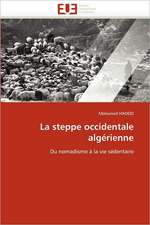The Fair-Line and the Good Frontage: Surface and Effect
Autor Stephen Walkeren Limba Engleză Hardback – 27 mar 2018
This book offers an extended consideration of the fairground showfront. It combines archival material, contemporary examples of fairs, and a sustained theoretical engagement with influential philosophies of surface, including recent work by Avrum Stroll and Andrew Benjamin, as well as the nineteenth century author Gottfried Semper. Semper’s work on the origin of architectural enclosure —formed from woven mats and carpets— anticipates the surface and material history of the showfront. Initial chapters introduce these philosophies, the evolution of showfronts, and the ways in which individual fairground rides and attractions are arranged to form an enclosing boundary for the whole fair. Later chapters focus on issues of spectacle and illusion, vast ‘interior’ spaces, atmosphere, crowds and surface effects. Informed by a wide range of work from other design and cultural studies, the book will be of interest to readers in these areas, as well as architecture and those curious about the fairground.
| Toate formatele și edițiile | Preț | Express |
|---|---|---|
| Paperback (1) | 378.71 lei 6-8 săpt. | |
| Springer Nature Singapore – 19 ian 2019 | 378.71 lei 6-8 săpt. | |
| Hardback (1) | 384.86 lei 6-8 săpt. | |
| Springer Nature Singapore – 27 mar 2018 | 384.86 lei 6-8 săpt. |
Preț: 384.86 lei
Nou
Puncte Express: 577
Preț estimativ în valută:
73.64€ • 76.89$ • 60.81£
73.64€ • 76.89$ • 60.81£
Carte tipărită la comandă
Livrare economică 15-29 aprilie
Preluare comenzi: 021 569.72.76
Specificații
ISBN-13: 9789811079733
ISBN-10: 9811079730
Pagini: 149
Ilustrații: XVIII, 136 p. 30 illus.
Dimensiuni: 148 x 210 x 18 mm
Greutate: 0.34 kg
Ediția:1st ed. 2018
Editura: Springer Nature Singapore
Colecția Palgrave Macmillan
Locul publicării:Singapore, Singapore
ISBN-10: 9811079730
Pagini: 149
Ilustrații: XVIII, 136 p. 30 illus.
Dimensiuni: 148 x 210 x 18 mm
Greutate: 0.34 kg
Ediția:1st ed. 2018
Editura: Springer Nature Singapore
Colecția Palgrave Macmillan
Locul publicării:Singapore, Singapore
Cuprins
Chapter 1: Introduction: Bostock and the Good Frontage.- Chapter 2: The Fair-Line.- Chapter 3: Surface Effect.- Chapter 4: From Canvas to Carving, Ornament and Supplement.- Chapter 5: Truth to Trompe, Theatre, Spectacle and Illusion.- Chapter 6: Spectatorship: the Panorama of the Whole.- Chapter 7: Surface and Effect: Architecture and the Patterning of Experience.
Notă biografică
Stephen Walker is the Head of Architecture at the University of Manchester, UK. He has published widely on theories and histories at the periphery of architecture, art practice, temporary and informal architectural activities and other forms of cultural production. He is currently preparing a longer study of the architectures, cultures and identities of the travelling street fair.
Textul de pe ultima copertă
This book offers an extended consideration of the fairground showfront. It combines archival material, contemporary examples of fairs, and a sustained theoretical engagement with influential philosophies of surface, including recent work by Avrum Stroll and Andrew Benjamin, as well as the nineteenth century author Gottfried Semper. Semper’s work on the origin of architectural enclosure —formed from woven mats and carpets— anticipates the surface and material history of the showfront. Initial chapters introduce these philosophies, the evolution of showfronts, and the ways in which individual fairground rides and attractions are arranged to form an enclosing boundary for the whole fair. Later chapters focus on issues of spectacle and illusion, vast ‘interior’ spaces, atmosphere, crowds and surface effects. Informed by a wide range of work from other design and cultural studies, the book will be of interest to readers in these areas, as well as architecture and those curious about the fairground.
Caracteristici
Contributes to work on affect theory, surface and atmosphere in exciting and novel ways A timely interjection into architectural theory whilst having a considerable shelf life with regard to its solid engagement with key textual and historical material Written in an accessible style and has a clear, readable format that logically outlines the subject, the aims of the book, theoretical context and empirical case studies
























